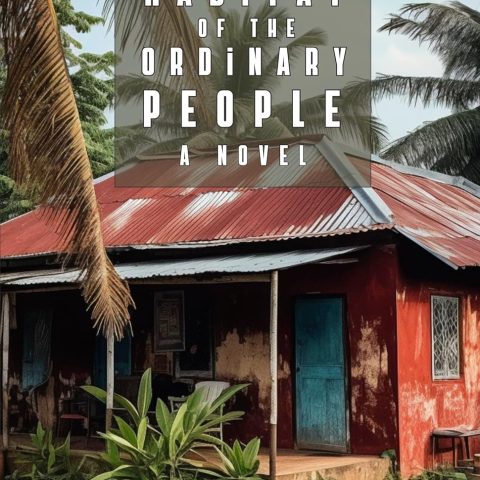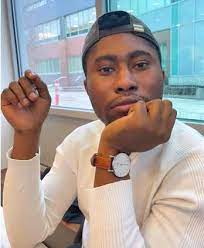By Mark Anthony Neal |with thanks to NewBlackMan
Monday, May 21, 2012.
The documentary A Night in Vegas directed by Reggie Rock Bythewood highlights a little known personal relationship between the late actor and rapper Tupac Shakur and boxer Mike Tyson. Shakur was murdered in Las Vegas after a Tyson boxing match fourteen years ago this September. That the two men—iconic figures in the 1990s and two of the most visible representations of Hip-Hop generation masculinity—maintained their friendship beyond the glare of celebrity journalism, even as they were also linked by their criminal convictions for sexual assault and rape, seems the most amazing aspect of their relationship. The friendship between Tyson and Shakur raises questions about what other historical figures had relationships that remain largely unknown to the general public, but offer insight to how such figures envisioned translating their fame, wealth and relative political influence into meaningful engagements on behalf of Black communities.
At the height of the Civil Right Rights Movement in the 1960s, Dr. Martin Luther King, Jr. emerged not only as the titular head of the movement, but the most well known freedom fighter in the world. When King was weighed down by the challenges of his vocation, there were few, if any, who could have fully understood what he was going through. The isolation that King experienced because of his unique role in history is not unusual for those who are essentially peerless—the reality that those of us who can readily locate our peers, often take for granted.
The lack of a legitimate peer-group, for example is what fueled comedian Steve Harvey’s meltdown last fall on Donnie McClurkin’s show, as he tearfully admitted that he simply didn’t have anybody to talk to. Earlier in Harvey’s career, the King’s of Comedy tour with the late Bernie Mac, Cedric-the-Entertainer and DL Hughley perhaps allowed him to find a community of peers, but given the demands from family, individual career goals, and even personality conflicts, such networks can be difficult to sustain over long periods of time. What if, for example, Lauryn Hill had access to such a network a decade ago?
Ironically for King, his most logical peer in the early 1960s was the man that was publically positioned as his ideological opposite, Malcolm X. The men were hyper aware of each other—King’s non-violent strategy was regularly targeted when Malcolm X played the ideological dozens—and also understood how they each benefitted and were limited by each other. In other words they needed each other—King more so than Malcolm X—in order to effectively reach their constituencies.
We can only imagine how the two might have developed a real friendship and understanding of each other’s political passions if they would have had access to the technology that we take for granted now, like text-messaging. Indeed would such a relationship been allowed to exist, given the political implications of the two most well know Black leaders of their era, working in concert with other, even behind the scenes?
Malcolm X, in fact, had such a relationship during nine months period from mid 1963 until March of 1964, as part of a small network—a circle of friends—that included the heavyweight boxer Muhammad Ali, football star Jim Brown and entertainer and businessman Sam Cooke. The period was one of the most tumultuous of an era that included the March on Washington, the bombing of the 16th Street Baptists Church and the assassination of President John F. Kennedy.
Malcolm X and Muhammad Ali were publically aligned because of their membership in the Nation of Islam, though they did not become close until 1962. Cooke and Ali appeared on television together and Cooke produced an album by Ali. Ali and Brown were close because they were two of the most successful Black athletes of the era. Few though, knew that at the time the Ali first won the heavyweight championship in Miami in February of 1964, that the quartet of men were running tight; Ali for example calls Cooke into the ring in front of television cameras just after his fight with Sonny Liston ends.
At the time Malcolm X was the oldest of the group (38) while Ali was still a very young and green age of 21. As athletes, the brash and outspoken Brown and Ali were the most well-known and Cooke was the most well-regarded (the function of him not being unspoken), while Malcolm X was the public spokesperson for a religious group that was still on the periphery of American society. Indeed Malcolm X became more well known with the publication of his autobiography—after his murder—than at any point during his political career.
Whereas Malcolm X brought political gravitas and experience to the group—he envisioned the young Ali as the best way to make the political goals of the Nation of Islam palatable to young Black Americans. Before Ali was transformed into political icon he was in the late 1960s, he was thought of as little more than a “clown prince” Cooke brought a business vision to the collective. When Cooke becomes really tight with Ali, Malcolm X and Brown during this period, he is in the process of transitioning from his career as a singer to that of a label owner (The SAR label) and music publisher. Well before popular artists talked about publishing and owning master recordings, Sam Cooke was, like his contemporary Ray Charles, getting publishing rights for his music.
We can only imagine what kind of things may have come from this circle of friends as internal politics within the Nation of Islam, which Malcolm X was forced out of in March of 1964, drove a wedge in his relationship with Ali, who remained loyal to the Nation. The two men would never speak again speak to each other after June of 1964. Malcolm X was murdered at the Audubon Ballroom in February of 1965; Cooke was murdered outside a hotel room in December of 1964 under still questionable circumstances. That the two men who were essentially the “brains” of the operation were murdered in such close proximity seems more than coincidental to some, including this writer.
The fact that this potentially powerful collective was so short-lived and ultimately destroyed by violence beyond their control, suggest that there were greater forces concerned about what such a relationship would mean, particularly if it could be reproduced among other young so-called militant Blacks. That fear was not unfounded; The Black Power fist protest of US Olympic sprinters Tommy Smith and John Carlos in at the 1968 Olympics in Mexico City was an example of what could happen, as was the willingness to professional athletes like Bill Russell and Lew Alcindor (Kareem Abdul Jabbar) to close ranks with Ali when he was under assault for his refusal to fight in Vietnam.
More subtle examples can be found in Aretha Franklin’s willingness to cover the music of Nina Simone (“Young, Gifted and Black”), essentially co-signing the professional risk that artists like Simone and Abbey Lincoln took by using their music to explicitly express their political convictions. But none of these examples had the full-fledged political implications that the relationship between Cooke, Malcolm X, Jim Brown and Muhammad Ali promised. Perhaps the closet manifestation of their relationship, after its demise, was the emergence of New York City’s “gang of four” in the 1970s—the late Percy Sutton, Basil Patterson (father of the current New York State governor), David Dinkins (the first Black mayor of New York City) and congressman Charlie Rangel.
As we can only imagine what the “circle of friends” from the 1960s might have become, we can also lament what might have happened in the mid-1990s if Tupac Shakur had survived his shooting in Las Vegas. Would a healthy and increasingly politicized Tupac Shakur been able to reverse that downward spiral of his “big brother” Mike Tyson had he still been alive. Would Tupac and Tyson have matured—together—to own up to the sexual violence that was already so present in their young lives and bring peace and forgiveness to the spirits of Desiree Washington and the victim in Tupac’s case?
With Tupac Shakur as its “pied piper” (instead of R. Kelly) would the trajectory of the Hip-Hop generation have been altered? How might Tupac Shakur and Lauryn Hill collaborated with each other on both music and in film—with Mos Def, Queen Latifah, and Will Smith perhaps? How might an older, mature Mike Tyson—hip-hop’s first athlete—have been the bridge between the generation of Black athletes like Michael Jordan and Magic Johnson and contemporary athletes like Serena Williams, Lebron James and even Tiger Woods. Would a healthier Hip-Hop generation been able to reach out to the man-child Michael Jackson and bring him home to thank him for allowing them to succeed on the levels that they have?
These questions, of course remain unanswered, but gives us the hope that as we look to the lost opportunities of the past, that perhaps there is a generation of Black icons who are also looking to the past and contemplating how to go forward more effectively than those who came before them.
***Mark Anthony Neal is the author of five books including the forthcoming Looking For Leroy: (Il)Legible Black Masculinities (New York University Press). He is professor of Black Popular Culture in the Department of African & African-American Studies at Duke University and the host of the Weekly Webcast Left of Black. Follow him on Twitter @NewBlackMan.
Send to a friend | �
View/Hide Comments (0) | �





